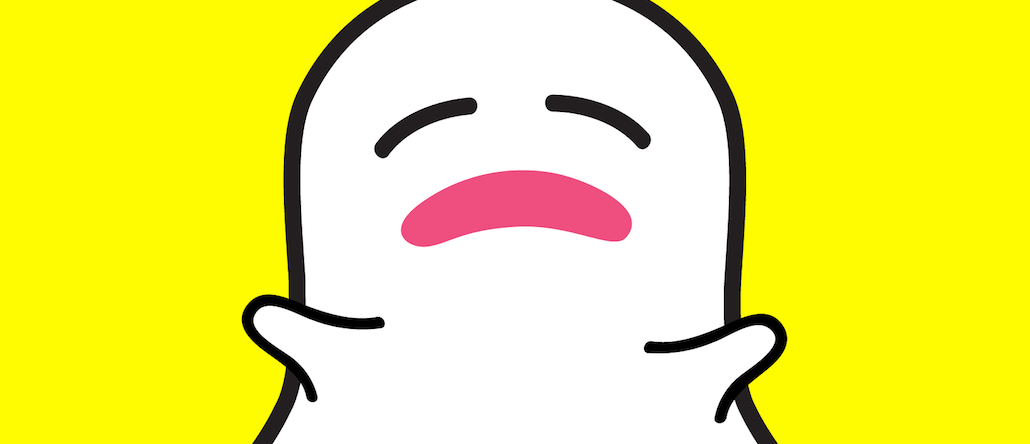Connect with execs from The New York Times, TIME, Dotdash Meredith and many more
Despite the hype, more than 30 percent of brand accounts are dormant on Snapchat

While many big ad spenders have jumped onto the Snapchat, there is much inertia in content creation from brands on this much-hyped platform.
Among the 427 brands across nine industry verticals surveyed by research firm L2 in its 2017 report, 64 percent of them set up a presence on Snapchat between January and October of last year. But as of last October, only 67 percent of those were active, snapping at least once a month. In comparison, the average brand posts on Instagram about nine times a week (almost 30 times a month), and most brands post on Twitter multiple times a day for customer service purposes. Even Facebook, where post frequency has slowed, brands are still posting at least one to three times per week, according to Taylor Malmsheimer, senior associate for L2.
“The reason that post frequency remains low and sporadic on Snapchat is that many brands lack the internal teams or budgets to produce the volume of content necessary on Snapchat,” said Malmsheimer.
From a creative perspective, Snapchat features like vertical format, text overlay and geofilters are new to the industry. Storytelling on the platform requires “a whole range of human emotions and more thought,” while on Instagram, Facebook, Twitter and Pinterest, advertisers can simply post an image, noted Rob Schipul, svp of social and content systems for agency Arnold Worldwide.
Bill Chamness, vp of strategy for agency Rain, agreed that Snapchat requires a different set of rules and requirements. As he described, since it’s harder to get right, the platform is often too heavy of a lift for brands or agencies whose social media teams are already spread too thin.
It also depends on how a brand has assigned roles for the other social networks because Snapchat may have some overlap or redundancies with other channels, said Chamness. For instance, the brand may be able to reach the same audience and achieve the same objectives with Instagram, so it doesn’t need to invest in Snapchat yet.
Ad budget is another hurdle. Snapchat’s ephemeral nature makes it difficult for brands to justify the internal teams and resource allocation needed to produce platform-specific content, explained L2’s Malmsheimer.
But the low activity rate doesn’t mean that Snapchat has no value for brands. After all, the platform has 150 million daily active users globally. Sometimes, for brands, it’s just a matter of cracking the required workflow.
Birchbox, for instance, has been testing different marketing tricks on Snapchat organically and the company managed to add Snapchat to its social media mix without requiring much more production effort, said Lorelei Orfeo, senior manager for content and social for Birchbox. If Orfeo’s team is doing a photoshoot in the studio, it will snap the behind-the-scenes activity, for example. Or if her team is hosting an event, it will cover it on Snapchat.
“This approach allows us to engage with our customers in a way that’s different than what they’re seeing on our other channels,” she said. “And it supports and adds dimension to the other things we’re working on.”
As Snapchat is trying to beef up its data capabilities through the partnership with Oracle Data Cloud and seeking ad deals worth millions of dollars with holding companies before its initial public offering, there may be fewer brands on Snapchat that constantly create organic content. After all, they don’t necessarily need a Snapchat account to advertise on the platform, said Arnold’s Schipul.
“I don’t think the low post frequency is a bad thing for Snapchat itself because it shows that brands may move from organic to pay to play,” he said. “But for brands, they should be active on Snapchat in a sense that they can get familiar with vertical video — not necessarily grow followers or drive engagement. There is little risk for them in an organic test.”
More in Marketing

WTF is ‘Google Zero’?
The era of “Google Zero” — industry shorthand for a world where Google keeps users inside its own walls — is here.

The next browser wars are here — and AI wants the ad dollars too
Perplexity and OpenAI are getting ready to take on Google’s Chrome, but will need a solid ad business to keep their browsers ticking along.

Vista Equity Partners’ TripleLift implements ‘significant’ layoffs
The latest round of layoffs is understood to have impacted all departments at the SSP across multiple geographies.








